Bryan Adams’ two feeder junior high schools are Robert T. Hill and William H. Gaston. According to Google, they are just 3.1 miles apart. I propose to take a quick look at these educational institutions and the men for whom they were named. Since I never set foot on the Gaston campus and went to Hill (September 1966 through May 1968), I will cover it first.
Let it be said that the Highlanders and Warriors were arch-rivals; any athletic defeat of “that other school” was especially sweet. Nonetheless, I remember at least a few teenage romances in which she was from Gaston and he was from Hill, or vice versa.
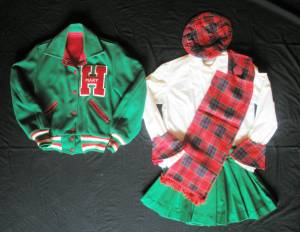 Hill opened in 1957 at 505 Easton Road in Dallas’ Lake Highlands area, not too far from White Rock Lake. Red and green are its colors, and the mascot is the Highlanders. The girls’ drill team was the Lassies, decked out in berets and plaid sashes. I use the past-tense form of the verb because I am not sure whether they are still in operation. At any rate, during our time there were grades eight and nine (six through eight these days), and about 900 kids walked its halls.
Hill opened in 1957 at 505 Easton Road in Dallas’ Lake Highlands area, not too far from White Rock Lake. Red and green are its colors, and the mascot is the Highlanders. The girls’ drill team was the Lassies, decked out in berets and plaid sashes. I use the past-tense form of the verb because I am not sure whether they are still in operation. At any rate, during our time there were grades eight and nine (six through eight these days), and about 900 kids walked its halls.
The Highlanders and Lassies shared a Scottish theme; I doubt any of us gave the slightest thought to the sad history of the Scottish highlanders. Here it is, in a nutshell. During the late 18th and early 19th centuries, the English government and aristocratic Scottish landowners conspired to remove most of the doughty people who had lived there for centuries so that sheep could graze instead. The “highland clearances,” brutal and unjust, devastated northern Scotland, resulting in large-scale emigration to the USA, Canada and Australia.
Our alma mater was named after Robert Thomas Hill (1858–1941), a native of Nashville. He was quite an interesting character. Orphaned at the age of five during the Civil War, he soon moved to Texas, living in Waco, Comanche and Uvalde. He worked for his brother’s newspaper, drove cattle up to Dodge City and was part of a survey crew. Hill studied the land and was a self-trained geologist even before he went to 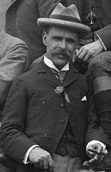 Cornell University in 1882 to seek a bachelor’s degree. He published widely—specializing in the Cretaceous period—and was soon on the faculty of the University of Texas, followed by a stint with the U.S. Geological Survey. Hill led a six-man expedition that explored and documented the canyons of the Rio Grande’s Big Bend region in 1899.
Cornell University in 1882 to seek a bachelor’s degree. He published widely—specializing in the Cretaceous period—and was soon on the faculty of the University of Texas, followed by a stint with the U.S. Geological Survey. Hill led a six-man expedition that explored and documented the canyons of the Rio Grande’s Big Bend region in 1899.
He conducted field studies in Mexico, the Caribbean, Nicaragua and Panama, and provided expert testimony in a boundary dispute between Texas and Oklahoma. Decided by the Supreme Court in 1923, it resulted in 450,000 acres in the Red River valley being “given” to Texas; the land contained major oil deposits. Hill, who had business interests all over the United States, spent the last decade of his life in Dallas. He wrote feature articles for the Dallas Morning News that conveyed scientific information to lay readers. Before Hill’s death, Baylor and SMU bestowed honorary degrees on him.
What is now Hill Middle School is still rocking along, with faculty and administrators doing their best to educate its students, of whom just 4% are European-American. Sixth-graders wear red polo shirts, seventh-graders wear dark green, and eighth-graders wear black; all wear khaki pants. Corporal punishment—I got a few butt-blistering licks back in the day—has been abolished by the Dallas Independent School District. The principal sometimes has to reassure parents that her school does not have a gang problem, despite appearances to the contrary. Hill got some publicity or should I say notoriety in 2003 when a 12-year-old female student was caught on video giving mouth-love to a 14-year-old male student in the back of a science lab while the teacher was out of the room. About 20 students and an adult security person sat and observed. Good heavens! Some wild things took place during my two years at Hill, but nothing like that.
The aging facility got a long-overdue $8 million expansion/renovation in 2010. Parents’ and students’ reviews I have seen range from glowing to profoundly negative. The elementary school which I attended, Victor H. Hexter, is just down the street. In 2013, only 16 of its 77 fifth-graders went on to Hill, their parents choosing other educational alternatives. One media source came up with a list of DISD’s worst schools, measured by 50% or less of students failing the math, social studies, science, reading and writing parts of the TAKS test. Hill was among them, although to be fair it was quite a long list—indicative of the woeful state of public education in Dallas, Texas.
As indicated above, I did not attend Gaston. I would have, since I was at Edwin J. Kiest Elementary School through fourth grade. My family moved a few miles northwest in the summer of 1963, putting me at Hexter the next three years. I cannot pretend to speak about Gaston with much authority, so I hope my critics will not be unkind.
First, a word about mascots. Hexter was and still is the Hawks—not offensive or politically incorrect. But Kiest was the Indians while I was there; it’s now the Stars. The Gaston Warriors? That simply would not do. It has been the Panthers for several years now. As with the Hill Lassies, I am not sure whether the 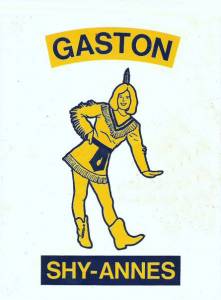 Gaston girls’ drill team, once the delightfully named Shy-Annes, is still extant. I suspect it is not. The colors (blue and gold) are unchanged. Gaston Junior High School opened at 9565 Mercer Drive in 1954, when I and my cohort were toddlers. I can only assume that graduates moved on to Woodrow Wilson High School before BA opened in 1957.
Gaston girls’ drill team, once the delightfully named Shy-Annes, is still extant. I suspect it is not. The colors (blue and gold) are unchanged. Gaston Junior High School opened at 9565 Mercer Drive in 1954, when I and my cohort were toddlers. I can only assume that graduates moved on to Woodrow Wilson High School before BA opened in 1957.
William Henry Gaston (1840–1927) is no less remarkable than his counterpart, Robert T. Hill. Born in Alabama, his family moved to Anderson County in east Texas when he was nine. His father owned a large plantation and served two terms in the Texas Legislature. With the start of the Civil War, Gaston joined Hood’s Texas Brigade and fought at Antietam and in other bloody battles. His brother was killed—darn those Yankees!—and he had a bout with typhoid fever but survived. Gaston later worked as a purchasing agent for the Confederacy, honing his skills as a money-maker. This guy had the Midas touch, as most of his ventures paid off handsomely. Although Gaston was one of Dallas’ first millionaires, he was civic minded, as we will soon see.
“Captain Gaston” got married and in 1867 moved to Dallas, then a community of just 3,000. He and a colleague formed a bank that evolved into Republic National Bank before he branched into the even more lucrative fields of real estate and railroads. As owner of a large plot of land in east Dallas, he allowed a fair to be held there in 1876. Of course, that became the State Fair of Texas, of which he was 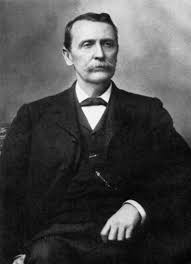 one of the directors. Two expansions of the fairgrounds were due to land sales, on generous terms, from Gaston. In gratitude for all he had done, in 1924 the City Council offered to name Fair Park after him but he declined the honor. Perhaps it was after his death that Gaston Avenue was named after him as well as a certain school.
one of the directors. Two expansions of the fairgrounds were due to land sales, on generous terms, from Gaston. In gratitude for all he had done, in 1924 the City Council offered to name Fair Park after him but he declined the honor. Perhaps it was after his death that Gaston Avenue was named after him as well as a certain school.
Gaston Middle School, as well as Hill, has undergone a demographic sea change over the past half-century, with a student body that is a negligible 4% European-American. It, too, made the list of “worst schools” in the DISD since test scores are abysmal, and gangs, bullying, drugs and an undisciplined environment are the daily reality; teachers use megaphones in the hallways to corral students and get them to their respective classrooms. There are accusations that in so doing, they curse the students. There are also accusations going the other way. Such information, I should add, is somewhat obsolete. Maybe things have changed and Gaston students are now respectful, diligent and eager to learn—kids destined for Yale, Stanford, MIT, Cal-Berkeley and Oxford after three years of further polishing at BA. But I doubt it.

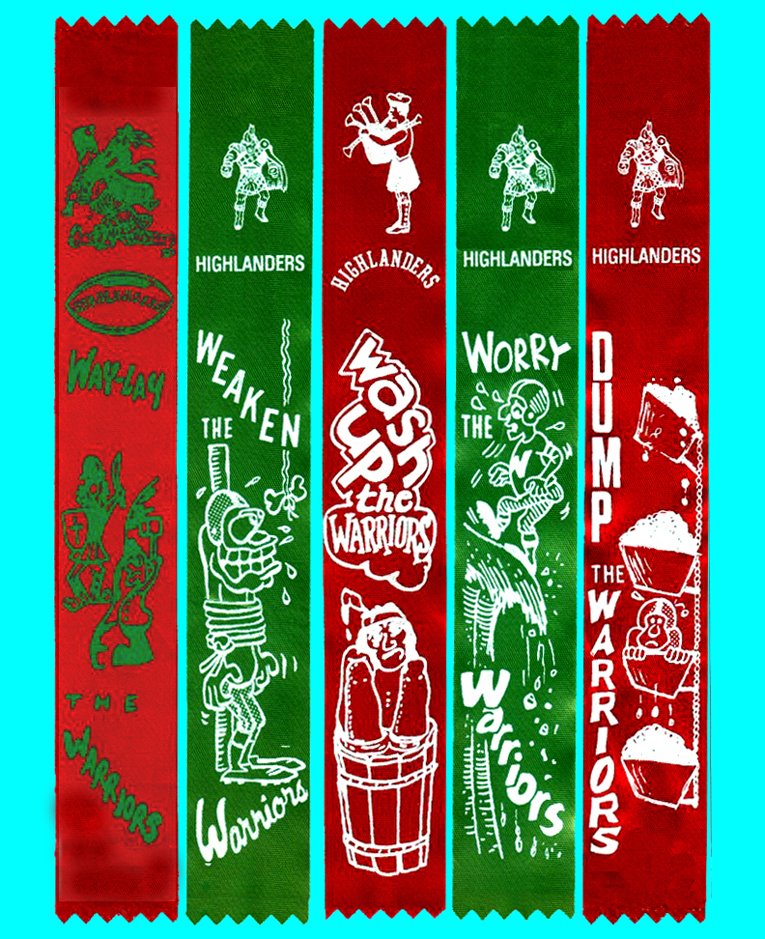
19 Comments
Insightful and unbiased narrative about the two middle schools that feed into Bryan Adams. Thank you for the history of the two namesakes. I never knew any of that, and I am a product of Gaston. It is a shame how the school environment has changed with the removal of a variety of discipline strategies.
And I thank you, Tammye. Mr. Hill and “Captain” Gaston were admirable people, but I in researching this story I learned that the craze to wipe away any memory of the CSA, there is a movement afoot to rename Gaston Avenue and the school. As you say, the quality of education at both schols has declined drastically. The lack of discipline, the violence (not that there was not some of that when we were HJS students) is terrible.
I, too, graduated to BA from Gaston, and your ‘report card’ for the school is disheartening. But this not just Gaston. The decline of our schools is nationwide, I believe. The same for DISD is a carbon-copy in Georgia where I live now. And it goes as far as the US military academies, where I never thought it could exist. There are model schools, but only a small percentage. Don’t blame the kids – our generation and others have allowed this happen. $0.02.
Jack, your opinion is worth more than that. “Disheartening” is so true. Hill, Gaston, BA and many other schools in Dallas, Georgia and other places. Thanks for reading and commenting.
I attended Hill from 02-04 when it was 7th & 8th grade. (I was not in the same classroom when the “mouth love” happened but i remember that crazy day.) I came from Hexter and went on to BA. No drill team when I was there, and I made it out just before uniforms were implemented. Thank you for this read, I learned quite a bit!
Hello, Madison. You were at Hexter, Hill and BA long after I departed. I’m sure our experiences were quite different. I wish I could understand why the Gaston and Hill drill teams were ended, but the BA Belles are still going strong. Any ideas?
I was told that they took drill teams out of junior high schools in Dallas. I don’t know if they still have marching bands. The original name for Gaston’s drill team was Bluebonnets. Our hats were blue, but certainly didn’t look like bonnets!
Very interesting, Sandra. When did the Bluebonnets become the Shy-Annes?
Thank you, Richard. I was at Gaston in the late 60’s, BA early 70’s. We were no Angels, but we respected the teachers, feared the principals and had a good time as school kids should. The removal of discipline was the worst thing the school districts ever did. We thought bussing was terrible as we watched our sacred halls turn violent, I can only imagine how very bad it became in later years. Thanks again for the history lesson, it was very interesting.
Stevie, I wonder if we crossed paths at BA. What year did you graduate? Thanks for reading this story and making a comment. I have other such reminiscences…
Remember that as late as 1980, Hill and Gaston also had full athletic programs, including 8th and 9th grade baseball teams. So did Marsh, Carey, Florence, Hood, etc. Full district play in all sports, and of course cheerleaders and drill teams for all.
Perhaps, but I have heard from many others that the Lassies and Shy-Annes were history as of 1975. I wish I knew why…some economic or cultural factors? And why would the Belles survive up to today?
Great informative article. Things change n sometimes sadly but we can only observe mostly. Was a friend n fellow student n cohort of Stevie’s above. Grew up in Casa Linda chasing fireflies. Had a wonderful childhood. Magical times ❤️🙏🏻
Barbara, thank you so very much for reading this article and offering a comment. I remember the fireflies, too!
I attended Hill from 71-73, we beat Gaston 7-0 in football the fall of 72. Graduated from BA in 76. Miss those days!
Hi Richard, Thanks for the article on Hill/Gaston. I believe the hat the Hill drill team wore would be a “tam” rather than a beret (I am Scottish). As mentioned, the last year for Dallas junior high school drill teams was 1975-76, the same year junior high was abandoned in favor of the middle school concept. I started J.L.Long in 1976-1977, the first year it was called a middle school. In 1976-77, Dallas high schools became four year, grades 9 through 12. I have been told the reason for the discontinuation of junior high drill team was due to the high costs to members of a group that one would only be in for one year. Perhaps it had something to do with the younger age of middle school kids. I am not sure. Also, you are correct about some Woodrow Wilson students going to Gaston before BA was completed. I have also met Woodrow alumni who lived in Pleasant Grove and went to Gaston before Hood or Samuell were completed.
Steve Cargile (WW ’82)
Stumbled on this story believe it or not trying to remember where Marlin Street was. I enjoyed the history of the two school namesakes and happy that I passed through DISD during the years we did. I think we escaped busing by just a year in 1971. I have often wondered what things would be like today without it.
Better…much better.
As for my time at Hill and BA, I passed through at the same time that you did and I was unscathed; it was a blur, as I existed in a brain fog. Maybe it was my immaturity, maybe it was the dramatic transition between grade school to the age when puberty begins to make all the changes. But one thing stands out, and it was classroom learning. It was the bullying, disrespect for authority and disinterest in school work I witnessed every time I went to the restroom….why, you ask?…The cigarette smoke was so dense, from the “cool” kids who couldn’t wait to light up a Marlboro. These offenders had their spotters to alert of “incoming” teachers et al, and would dowse the ciggy and run out the door, leaving the caustic, airborne pollution behind. I am surprised I didn’t get a lung disease. These type of offenders were either found or turned over to the assistant Principal, R.L. Taylor, nicknamed “Rubber Lips” because of his incessant pursing of his lips and syncopated speech pattern. His personal hygiene was cluttered with the smell of smoke on his breathe, clothes and tar colored fingers… he was a smoker too. It seemed like he was everywhere, chasing the hoodlums and neer-do-wells, during school, but he was never in the vicinity of the bathrooms I frequented. I always wanted to see those kids get busted. When apprehended, he held their arms tightly , shoving them into his office, to delve out corporal punishment. These offenders of school rules received a swift smack with the paddle on their gluteal group… no reasoning with these offenders, since the paddle was his primary go-to form of instruction/discipline. I never received said form of reminder on the “seat of justice”, but you mentioned that you had. Was it from Rubber Lips?
Add Comment